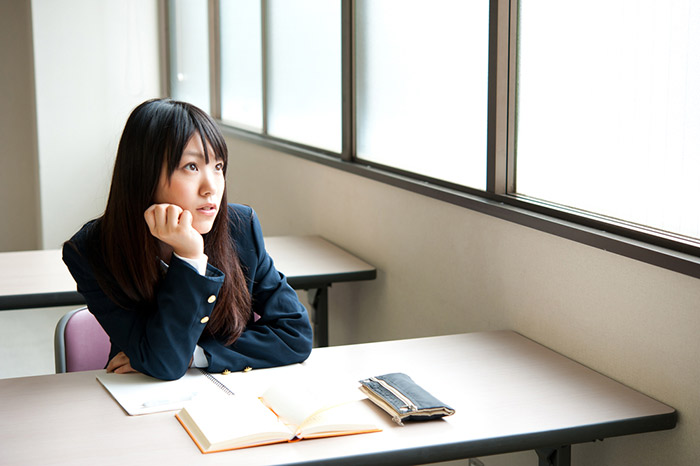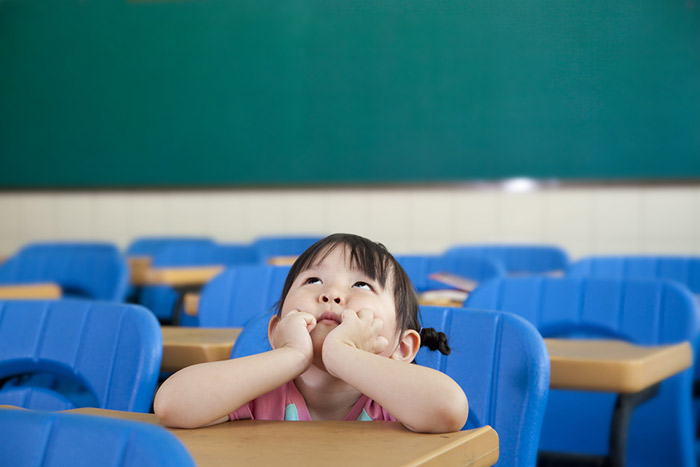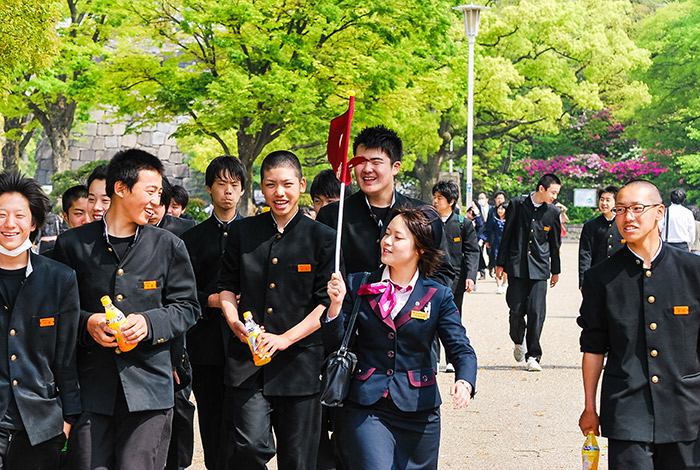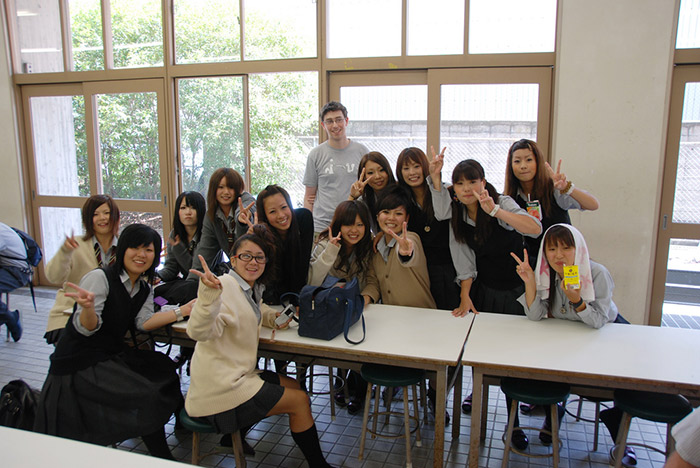One day, even though I had plans to hang out with my friends Johnny Depp and Orlando Bloom, Professor Anderson gave me some homework: "Make one million sentences in English." About that time, they both of my star friends were really busy filming the "Pirates of the Caribbean," so it was my only chance to go out with them both together at the same time. Nevertheless, I chose to do my homework instead of going out because I was so diligent. I am still proud of the moment I made that decision.

This sounds like a dream, doesn't it? I wish this was true, but unfortunately not…
"Tell me about your greatest moment as a student." That was my homework from the ESL school that I used to go to. As you can probably tell, I wasn't particularly 'diligent' and that is why I made up a silly short story for my homework. Getting a high grade or making a great presentation could be thought of as a "great moment" for most students, but honestly I couldn't come up with any good examples at the time no matter how much I thought about it.
Education is often analyzed in terms of outcomes, results, or as a process. But here I would like to put this assumption aside, and just concentrate on the experience itself, specifically in Japan. Wouldn't you like to know what it is like?
Educational System in Japan

In Japan, the educational system in is the same as it is where I am now (Canada).
- 6 years of elementary school
- 3 years of junior high school
- 3 years of high school
- 4 years of university
This was actually reformed after WWII from the old 6-5-3-3 system to what you see above. Of these years of education, high school and university are not mandatory, though high school enrollment is over 96% nationwide in nearly all cities of Japan. Around 46% of Japanese high school graduates go on to college or university.
Most schools operate on a three-term system with the academic year starting in April when the cherry blossom bloom, and end in March of the following year. So in March there is a graduation ceremony, and I remember a lot of students were crying because of hay fever creating a very grave atmosphere.
There are some people who claim that Japan should change the school-year system to be the same as North America, because this difference sometimes causes inconveniences to students who wish to study abroad in places such as the US, Canada, and so on. The same problem would happen to foreigners who wish to study in Japan as well. They graduate from their school in June or July, but have to wait until April to go to a Japanese school.
Personally I would be a little sad if the Japanese school-year system was changed. It's such a beautiful moment to say goodbye to your friends underneath the cherry blossoms in full bloom.There are so many good songs about graduation and cherry blossoms, too, and they would all be ruined! Although I understand the student side of perspective, I'd like them to leave that system as a Japanese culture.

さくら(独唱)」/森山直太朗
卒園式の歌(さよなら僕たちの幼稚園) 号泣
Too Many Study Hours

Other than the lower grades of elementary school, an average school day on weekdays in Japan is seven to eight hours depending on the school and what grade you're in. That's one of the longest school days in the world! Despite this, a student's studying doesn't usually finish even after school lets out. Not only do they have drills and other homework after school, but there's also extra classes to attend at their public schools or at private "cram schools" known as juku 塾. Especially with junior high and high school students, much extra time outside of regular school is spent studying and preparing for their entrance examinations. Even during vacations (six weeks in the summer and two weeks for both winter and spring) there is often homework to be done and jukus to attend. Hours outside of school hours are spent at juku.
If my memory serves me correctly, I started going to a cram school in my third grade of elementary school. I still remember when we had a "New Year's Eve all-night studying toshikoshi tetsuya benkyoukai 年越し徹夜勉強会 event in my fifth grade. Teachers encouraged us not to fall asleep but to keep studying until the morning. It would have been very fun to stay up later with friends, if only we weren't studying. However, hatsuhi no de 初日の 出, which means "the new year sunrise," was quite memorable and made everyone's new year resolution the same: achieve better grades and study hard. I found it pretty fun at first, because teachers actually prepared a little games for us, too. However, maybe around one o'clock, my eyelids started getting more and more heavy. I tried to study but couldn't concentrate on it anymore and I doubt that it was only me. It wasn't a efficient way to study at all. It was all about discipline.
Although studying itself is good for everyone, studying too much can make people stressed out. Therefore, if I could change the Japanese school system, I would remove the big entrance examinations and cut down the amount of private school education, because I think that is an overload of work for children. Second only to bullying, the number of children committing suicide due to "anxiety for the future" is increasing. Most of this is due to worry about how one will perform on examinations.
Japanese Classroom System

I was surprised that many schools in Canada don't seem to have fixed classrooms because in Japan every class has its own fixed classroom. In most cases in Japan, the students take all the courses in the same classroom with the same classmates, except for practical trainings and laboratory works. In my case, grades 3-4 and grades 5-6 were 2-year fixed classrooms, though it's usually just a 1-year fixed classroom system.
In elementary school, one teacher teaches all the subjects in each class, whereas the teacher changes depending on a subject in junior high and high school. Instead of the students moving around to the teachers, the teachers move around to the student (besides the exceptions I mentioned earlier).
Another thing that's different about the Japanese classroom system is that most elementary and/or junior high schools provide lunches on a standardized menus known as the kyuushoku 給食. The students are all divided into groups called han 班. With lunch, this is important because one han is the kyuushoku touban 給食当番. This particular han's job is to take responsibility for the 給食. They pick up their classmates' lunches in the school kitchen / lunch delivery area, carry the lunches to the classroom, serve their fellow classmates, makes sure that the food settles down into each kids' stomachs, and then carries everything back. There is usually about a week rotation for which each han is the kyuushoku touban 給食当番.
If you're not on the lunch duty han, your han could be doing something else that's helpful. For example, students in a Japanese school are responsible for doing the cleaning of their own school. Sometimes there is a han that takes on the duty of cleaning souji 掃除, and they are known as the soujitouban 掃除当番. I think this is a great system because it is a good way for kids to learn how to socialize and be responsible. It also makes them more aware about causing a mess, since either they or a friend will have to clean it up!
School Uniforms

Some elementary schools and nearly all junior and high schools require their students to wear school uniforms. In my case, I wore school uniforms from kindergarten to high school.
Although some people believe that students, or at least high school students, should be able to choose the clothes they want to wear in school, I'd say that the best policy is that they wear uniforms because it's more affordable and convenient.
Students tend to be very concerned about fashion and fitting in, so if they can choose the clothes they want to wear at school, they will prefer to wear brand-name clothing. For example, I remember that girls put a lot of money into brand-name socks or loose socks, which are a style of baggy socks. A pair of socks are sometimes 1,000-2,000yen. What a rip off! Thank goodness socks are the only brand-name thing for us to put on due to the uniform. If we were allowed to wear whatever we wanted, people would have certainly added hundreds of thousands of yen in clothing costs in a single year.
Also, uniforms are very convenient. Students do not need to worry about what they will wear to school. For instance, they do not need to consider what colors match with what, which style looks best, and what their classmate will think of their clothing. If everyone wears the same uniform, all of these choices are made in advance , so you don't have to feel self conscious about your clothes. It saves more time for students and they can concentrate on studying more, though it just gave me longer sleep in the morning.
Furthermore, uniforms tend to be made of strong materials and they are easy to clean. I wore uniforms from kindergarten to high school and I had two uniforms for each warm season and cold season. When one was dirty I would wash it and wear the other one. This way my school clothes were always clean and ready to be worn. Uniforms are very practical!
They are not good all the time, though. As in many countries, uniform policy is strictly adhered to. There is a set length for skirts and teachers would take out tape measures to check. Japan has four seasons and its weather and temperature can vary greatly. However, uniforms usually only come in two varieties: winter and summer. Anything in-between can be a bit uncomfortable.
I also remember that my teacher wouldn't allow me to put pants on because of the uniform policy, even though it was a freaking cold day. It might become less practical and ununified, but I think it would be good for students' health to wear warmer clothes on cold days and lighter clothes on warmer days. Heck, let the boys wear skirts in the summer if they want to! I still believe that I have bad circulation because of the school uniforms.
A Great Difference

A great difference between the Japanese school system and the North American School system is that the North American people respect and encourage independence whereas the Japanese people control individual responsibility by maintaining group rules. This explains one characteristic of Japanese social behavior (or maybe even Asian social behavior).
I realized this fact in ESL school in Canada. There were students from all over in the classroom: Saudis, Brazilians, Spanish, Chinese, Korean and me, Japanese. While the teacher was talking, myself, the Chinese, and the Korean students never butted in to ask questions or to announce our opinions. We waited until the teacher was completely finished, whereas students from other countries spoke out anytime.
We talked about this in the classroom once and figured out that this difference was caused by each country's school system: in Asia, we mostly have lecture style lessons and in other countries, they spend a lot of time doing discussion style lessons.
A Joke
To finish this article, I wanted to end with a famous joke called A Brilliant Japanese Student In An American Classroom. I wonder if you find an odd bit in this joke… you got it? Yeah, the Japanese guy named Hideo speaks out too actively, doesn't he? Which is pretty different from what you've learned about Japanese students from this article today. I don't think the average Japanese student puts his/her hand up as much as this guy, either.
A BRILLIANT JAPANESE STUDENT IN AN AMERICAN CLASSROOM
It was the first day of school and a new student named Hideo, the son of a Japanese businessman, entered the fourth grade. The teacher said, "Let's begin by reviewing some American history."
Who said "Give me Liberty, or give me Death?" She saw a sea of blank faces, except for Hideo, who had his hand up.
"Patrick Henry, 1775." he said.
"Very good! Who said 'Government of the people, by the people, for the people, shall not perish from the earth'"? Again, no response except from Hideo:
"Abraham Lincoln, 1863.", said Hideo
The teacher snapped at the class, "Class, you should be ashamed. Hideo, who is new to our country, knows more about its history than you do."
She heard a loud whisper: "F-k the Japanese."
"Who said that?" she demanded.
Hideo put his hand up. "Lee Iacocca, 1982."
At that point, a student in the back said, "I'm gonna puke."
The teacher glares and asks "All right! Now, who said that?"
Again, Hideo says, "George Bush, to the Japanese Prime Minister, 1991."
Furious, another student yells, "Oh yeah? Suck this!"
Hideo jumps out of his chair waving his hand and shouts to the teacher, "Bill Clinton, to Monica Lewinsky, 1997!"
Now, with almost a mob hysteria, someone said, "You little sh*t, if you ever say anything else, I will have you killed."
Hideo yells at the top of his voice, "Gary Condit, to Chandra Levy, 2001."
The teacher fainted
Hope you enjoyed the joke! For me, the Japanese education system is weak because it makes Japanese students get more and more conservative as time goes by. I think Japanese students should be more vocal and participate in a conversation like Hideo. Well, maybe Hideo is too much, but at least a little more. Many of them don't have curiosity about the world or ambition to study overseas, either.
I think that this problem has been caused by the big examination system because they are forced to be in a competition to get into the better school from very early in their life. Their end goal is often set up to get into the best university by their parents and/or teachers. Hence, many of them don't gain curiosity about anything other than getting a good mark and they become like drones.
I'm pretty sure that you all probably have such interesting personal stories about your own educational experience. Tell me about your country's education system. How is it different? How is it the same? What do you like / dislike? I think all educational systems in the world have good parts and bad parts, so maybe if we learn from each other we can make education better around the world! Arigatou.
